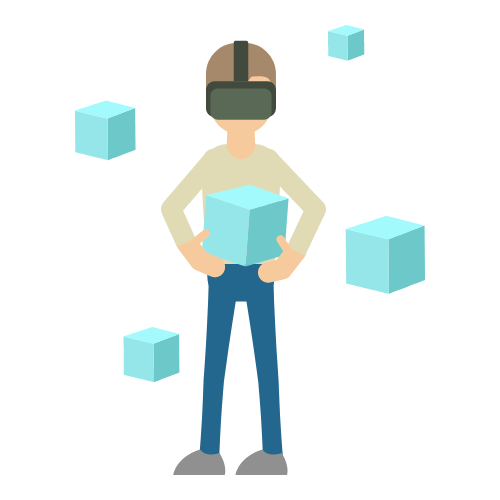This project investigated novel approaches for cooperative object manipulation in virtual reality. We started exploring some techniques on this domain during summer research at Duke University. At the moment the project mainly focused on metaphors that mimicked the real world, such as two people carrying a large object using direct mapping manipulation. Later the scope was modified and it became a submission to the IEEE 3DUI Contest 2016. The contest provided a couple of obstacles that had to be used to explore the collaboration. Since the tasks were focused on small objects, we modified the type of interaction we were using for something more “magic”. At this point, we decided to explore the asymmetries in collaboration instead. Could we provide users with complementary capabilities by splitting the degrees of freedom, and positioning them in different perspectives?
We developed a 3D user interface that allowed two users to interact with an object at the same time. It supported three operations (scale, rotate and translate) that were splitted between the users and could be changed by pressing a key. We performed 6 DoF tracking of two cubes using ARToolkit, which had the intent of representing the virtual object that the users had to move during the task. Users had two distinct viewpoints, where one was very close to the object, while the other was further away. The idea here was to play with the idea of detail vs overview. At some points, it would be crucial to have fine control while in others a broader view would be more effective.
We did not win the contest, but this was a compelling learning experience for someone who was just starting with VR design, learning the basics of Unity Engine development. I could also explore a bit of my communication and organization skills, as I was leading the team.
Proceedings Articles
Collaborative hybrid virtual environment Proceedings Article
In: IEEE Symposium on 3D User Interfaces (3DUI), pp. 283–284, 2016.
